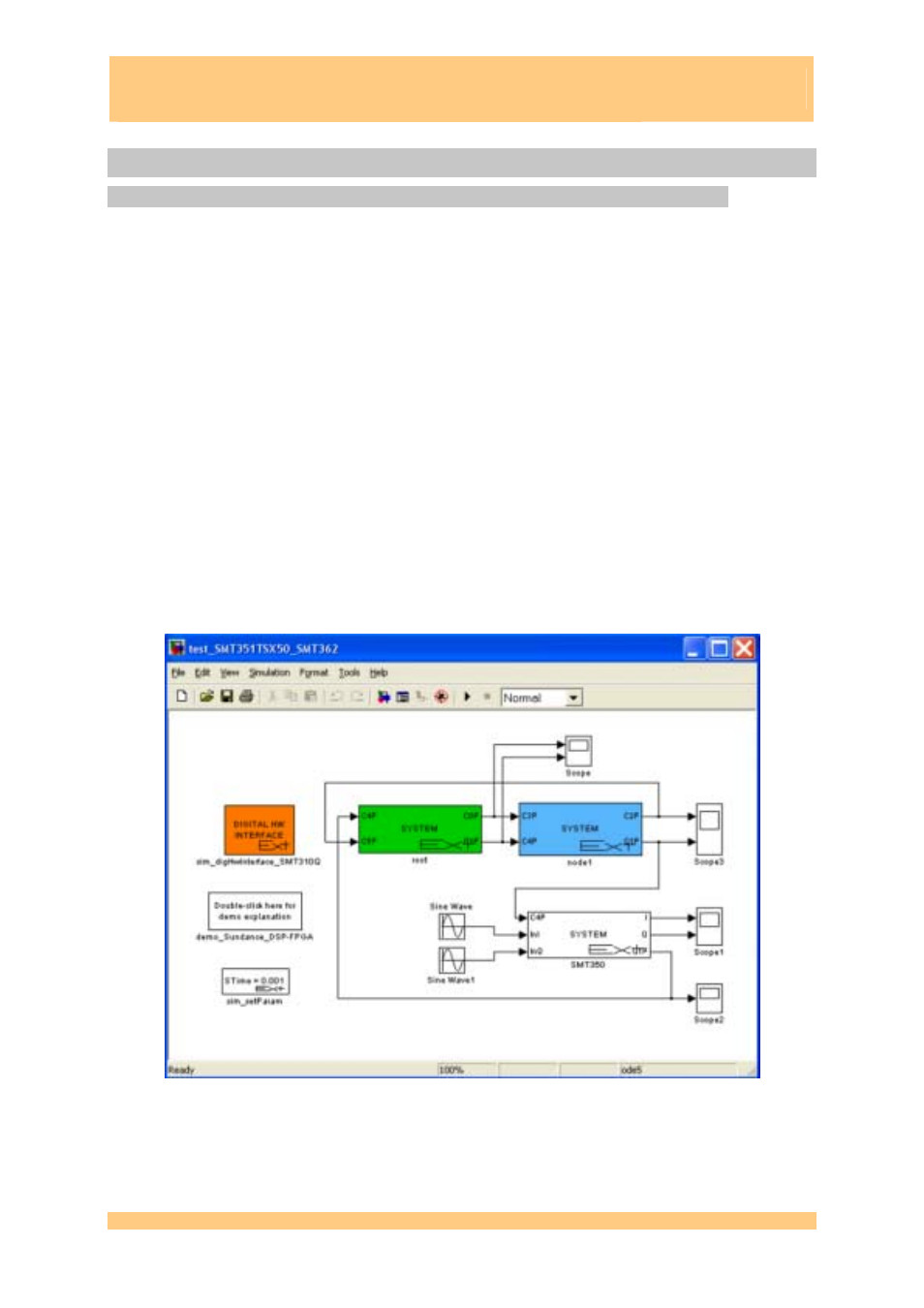Version 2, Version 2 functionalities, Figure 34: a smt6040 dsp-fpga-adc/dac design – Sundance SMT6040 User Manual
Page 41: Smt6040, 5 version 2

Sundance Multiprocessor Technology Limited
Form : QCF32
SMT6040
“Sundance Simulink Toolbox”
Date : 6 July 2006
5 Version 2
5.1 Version 2 functionalities
This section describes the main functionalities of the Version 2, from the basic operations to
the most advanced features. We recommend new customers (using Version 3.0) to follow the
instructions in the previous chapters. The main demos included in Version 2 are described
from paragraph 5.3 onwards.
The SMT6040 takes advantage of Sundance modularity and scalability to generate multi-
DSP/multi-FPGA applications from Simulink diagrams. The same application can target
different systems by few changes in the configuration.
Moreover, the SMT6040 uses Diamond channels to implement the communication between
processors. So, the user just needs to set up these virtual channels.
Each channel will be then mapped onto a comport or a SHB connection, thus fully exploiting
Sundance communication resources. The SMT6040 will automatically configure the
hardware and then manage the inter-processor communication. So the user does not need to
worry about interrupts, data flow, etc. This makes development much easier and faster.
We use now a sample application to demonstrate the SMT6040 features and to describe how
to generate an application targeting a DSP-FPGA-ADC/DAC system.
We consider the system diagram represented in Figure 34. This is composed by three main
blocks (each related to a processor) and a number of other blocks that we will now outline.
A similar structure can be used for many different systems and applications.
Figure 34: a SMT6040 DSP-FPGA-ADC/DAC design
SMT6040 - “Sundance Simulink Toolbox”
Last Edited: 08/01/2010 15.42
Page 41 of 53
